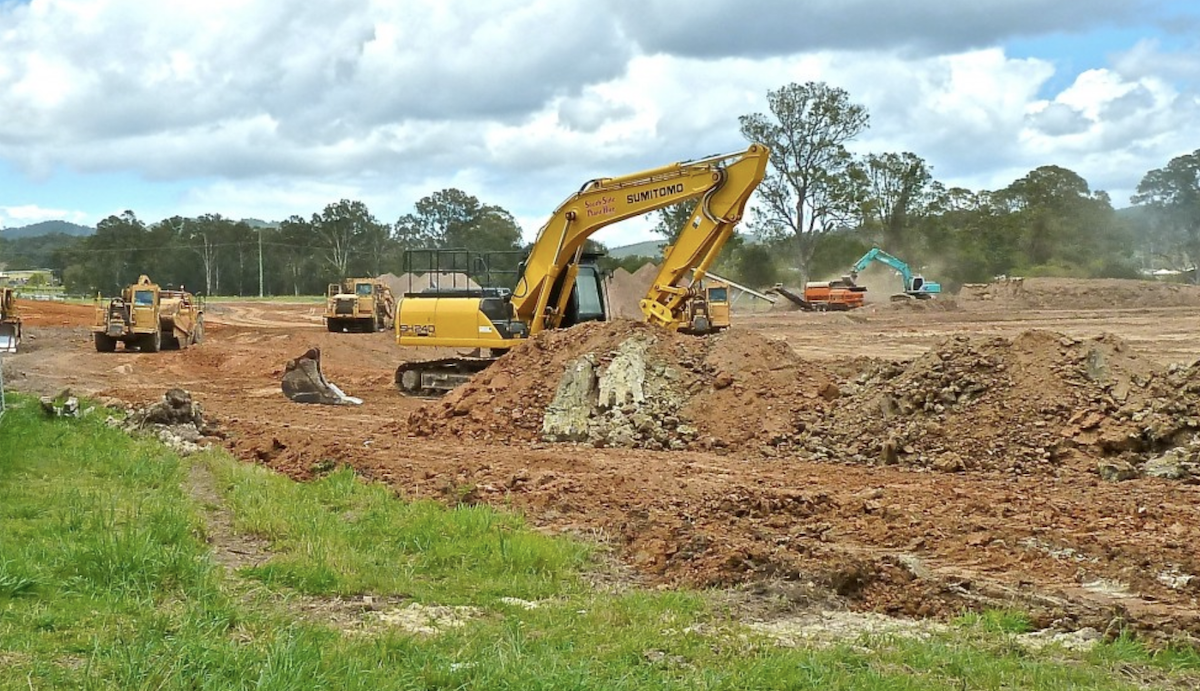Even with the primary focus on surviving the cataclysmic housing market, in the back of every production builder's mind is a troubling concern: What strategy will assure an adequate supply of building lots for the next few years (when lots are bound to be plentiful and terms easy in most markets) and when the lot supply tightens again five years from now?
It's a big worry because, in some markets, it takes three to five years to plan, entitle and develop a parcel of ground. And most builders now face the certainty that their bankers will not be there with the expansive credit lines they've counted on to provide land acquisition, development and construction financing for the last 15 years or more. “There's going to be a fundamental change in the way builders do business,” says Littleton, Col.-based management consultant Chuck Shinn. “The banks will be out of real-estate lending for the next five years, probably more.”
Shinn believes builders are going to have to depend on equity financing for a long time — private investment groups, pension funds, insurance companies, etc. That's more expensive money. And none of those investors have much appetite for land risk after the bloodletting of the last three years and Uncle Sam's massive $700 billion bailout of the financial industry. “Even the public builders will try to operate as land-light as possible,” Shinn reasons. “Wall Street is certainly not going to let them carry a 10-year supply of lots and land under development. Just-in-time delivery of lots will be the goal of production builders large and small.”
No wonder the NVR model is the subject of so much cocktail conversation these days. The McLean, Va.-based public builder has been the darling of Wall Street for years because of the superior margins it earns by specializing in efficient home building, leaving land acquisition, entitlement and lot development — and the profits associated with those functions — to others. A network of developers and land bankers funnel lots to NVR in markets from the mid-Atlantic to the Carolinas.
One Little Problem With the NVR Model
The Catch-22 for all those builders who suddenly think the NVR model is the way to go is that it just won't work in some markets, or at least it never has. Production builders in Southern California, South Florida and the Chicago suburbs, for example, have to develop land to get enough lots to grow their companies. Land developers in those markets don't operate on a scale to match the sales pace production builders achieve. You might be able to survive by buying developed lots in those markets for the next several years, but when housing heats up, you'll have to develop land to hold market share, let alone grow.
“We'll still develop land,” says Chicago builder Buz Hoffman of Lakewood Homes, “and I'll be able to put together private investment groups made up of local professionals — doctors and lawyers — to provide the capital we need. The thing that will have to change is the scale of the projects. They will be smaller — to limit the risk.”
At the Professional Builder Benchmark and Avid Leadership Conference in October, The Drees Co. president David Drees asked pointedly, “What makes you think even NVR will be able to make that model work in the future, when the developers they count on can't get bank financing? To find anyone willing to shoulder the risk of carrying land for a builder, you're going to have to guarantee better returns than those firms produced in the past.”
Tom Krobot, president of Atlanta-based Ashton Woods Homes, believes many of the firms that performed the role of land banker for public builders earlier in this decade are on their way out of business. “They'll either go away or be greatly diminished,” he says, “because most of them have to be upside down today. The land they invested in is under water impaired and the builders are walking away from their deposits, which don't begin to cover the losses.”
Where the NVR Model Works
The NVR model will not work everywhere, but where it does, it has a proven track record of success. Anywhere with an established land development industry producing large quantities of finished lots in a variety of sizes and price ranges, builders who disdain developing their own land swear by the results. Texas is one region where builders can probably do fine, without developing land, for the foreseeable future.
“Our company operated on the NVR model for 25 years before we started developing land seven years ago,” says David Weekley, chairman of Houston-based giant David Weekley Homes, who once spent a week studying how land-light operations work with former NVR chairman Dwight Schaar. “Going forward, unless land returns reach double digits or the market gets as constrained as it is in Southern California, it just doesn't pay for a builder to be a land developer,” he says.
Weekley says when Texas housing markets stayed hot for a dozen years, he lost sight of the risk inherent in land development. “We all forgot the pain potential. The risk was less visible. All we could see was the gain some builders derived from those double-digit margins in land development.”
Developers' terms got so tough, Weekley says, builders chafed at the cost and thought they could do it themselves. “When we had to put up half a million dollars in advance to get lots, we figured we were basically financing the cost of development without getting the profit,” he says.
Crashing land values brought a change of heart. “We're returning to our roots,” Weekley says. “If I ever go back into developing land, scold me. The only place we'll ever do it again is on infill parcels for high-density projects. We've got to develop those from scratch.”
Future Players Emerge
Although many of the companies that used to land bank for public builders before the crash may be going away, new players are emerging, eager to take their place. One is Starwood Land Ventures, a subsidiary of Greenwich, Conn.-based Starwood Capital Group Global. It was formed in September 2007 to create a nationwide business as a capital source for residential builders as well as a joint venture partner and land developer.
“Our niche is residential land,” says Starwood's east region president Mike Moser, who operates out of Bradenton, Fla. He was formerly a home building and land development executive with Taylor Woodrow Communities. “We will entitle land, develop it and deliver lots. In some situations, we'll sell lots to builders, but we also have the ability to move toward other forms of business relationships, even providing equity funds to private builders who need to circumvent the absence of bank financing.”
Moser says Starwood will form joint ventures with builders where the firm carries the bulk of the land risk and the builder a much smaller share. “That will allow the builders we partner with to grow when the market comes back rather than just survive,” he says. He admits firms of a similar nature that bought land in 2004 and 2005 and carried it for public builders into the housing crash have not survived. Still, that's the role Starwood wants.
“Acting as off-balance-sheet land bankers for the public builders is the niche we're designed to fill,” Moser says, “delivering lots on a just-in-time basis.”
What goes around comes around.
Opportunity in a Land Supply Gap?
Despite stagnant sales and a current oversupply of building lots in many markets, Colorado-based management consultant Chuck Shinn believes the housing industry could soon see a shortage of serviced lots that will drive up prices — at least temporarily.
“The federal bailout of financial institutions is going to result in creation of a new government entity resembling the Resolution Trust Corporation (RTC) of the late 1980s,” Shinn predicts, “except this time, they won't let the banks go broke like they did the savings and loans. This time, the feds are going to buy the assets in order to put equity back into the banks and keep them alive.”
This scenario will allow banks to foreclose on builders, then dump land assets on the federal government, which will eventually package them into large blocks and sell them off. The trouble, Shinn says, will come from the long delay between acquisition and disposition of these land assets. “The federal bureaucracy can't do anything fast,” Shinn warns. “It took the RTC four years to begin to get land back into the market in 1991. “When the housing market comes back, we'll see a shortage of lots until the feds finally bring all those lots back into play,” Shinn says.
He predicts lot prices will go up faster than house prices until the feds finally put the assets trapped in a bureaucratic backwater into the market again.
The good news: Shinn sees an opportunity for builders to negotiate with bankers during 2009, before they flip land assets to the feds. “The government will only pay 20 cents on the dollar for this stuff,” Shinn says. “The banks want 70 cents. And the gap in availability will drive up lot prices. No one will develop dirt during the gap because everyone knows the feds will eventually dump huge quantities of lots back on the market.”
Builders able to negotiate asset prices slightly above what the feds will pay could create an advantage for themselves to build on cheap lots, Shinn reasons. “Those lots will become scarce and valuable during the gap.”
Trouble Without Problems: A Look at The Estridge Group
Indianapolis builder Paul Estridge (The Estridge Group) says his market is largely free of the problems causing housing markets to freeze up in many areas of the country. Still, the fallout from crashing financial institutions and consumer fear are impacting his business, which is concentrated in the move-up market, at prices between $350,000 and $500,000.
“What's going on in California and Florida is as foreign to me as if it happened on the moon,” Estridge says. “We've not seen any drop in home values. In fact, our prices in Indianapolis have gone up 3.6 percent in the last year. We don't have any overhang of unsold inventory. Our market is one of the most affordable in the country. And yet, our customers are scared to death. They watch the news on TV.”
Estridge says his sales were off 50 percent this year, until 90 days ago, but now are just fine. “We've sold 63 homes since then,” he reports, “split almost equally between contracts and inventory houses.”
He reports that less than 1 percent of Estridge buyers have ever used sub-prime mortgages. “Our average buyer has a 720 credit score and an 83 percent loan-to-value ratio on the home purchase,” Estridge says. But he also reports his bank financing is going away, just like that of builders in more stressed markets.
“To make up for the absence of bank financing, I'll put together private equity ventures,” he says. “I've lived here all my life and I have the reputation to do it. The public builders have walked away from a lot of deals, but I've never done that.”
He says he'll pull together local investors, insurance companies and several small community banks to provide financing. “The guy down the street who has $5 million to invest and hates for it to be in the stock market will come to me because he knows me and I have his trust,” he says.
Estridge develops land. “We could go either way,” he says, “but we choose to develop land so we can control the quality of the community and the timing of lot availability. Developers were not delivering lots when I needed them.”
He has one request: “Why doesn't the national media report that the housing market in Indianapolis is stable, and that we've never had a run-up in prices?













